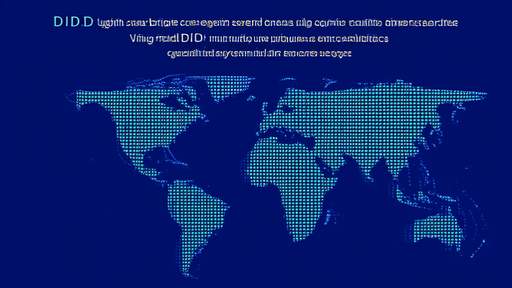The rapid advancement of geospatial technologies has ushered in an era where spatial data services are becoming increasingly integral to both public and private sectors. From urban planning to logistics optimization, these services offer unparalleled insights. However, as their adoption grows, so do concerns about privacy and compliance. The intersection of spatial data and privacy regulations presents a complex landscape that organizations must navigate carefully to avoid legal pitfalls while maintaining user trust.
The Evolving Nature of Spatial Data Privacy
Spatial data, by its very nature, is often personal. Location information can reveal intimate details about an individual's habits, routines, and even associations. This characteristic makes it particularly sensitive under privacy frameworks like the GDPR in Europe or the CCPA in California. Unlike traditional personal data, spatial information can be inherently identifiable, even when anonymized. Studies have shown that just a few location data points can uniquely identify an individual, raising significant challenges for data minimization and anonymization techniques commonly used in other data domains.
The regulatory environment is struggling to keep pace with technological advancements in this field. While some jurisdictions have begun addressing location privacy specifically, many existing laws were not designed with geospatial data in mind. This creates ambiguity around what constitutes compliant use of spatial data services. Organizations must therefore adopt a precautionary approach, often going beyond strict legal requirements to ensure ethical data practices that will stand up to future regulatory developments.
Technical Challenges in Compliance Implementation
Implementing privacy-compliant spatial data services involves numerous technical challenges. Data aggregation, often touted as a solution, must be carefully calibrated to prevent re-identification while still maintaining data utility. The concept of "k-anonymity" – ensuring that an individual's data cannot be distinguished from at least k-1 others – becomes particularly complex when dealing with high-resolution spatial data in sparse areas. Differential privacy techniques, which add statistical noise to datasets, must balance privacy protection with the need for accurate spatial analysis.
Another critical consideration is the storage and processing architecture of spatial data systems. Many traditional geospatial databases were not designed with privacy-by-design principles, requiring significant modifications or entirely new architectures to support features like purpose limitation and data subject rights. The distributed nature of modern spatial data services, often involving multiple third-party providers, further complicates compliance efforts by creating complex data governance chains.
The Role of Purpose Limitation in Spatial Data Services
Purpose limitation – the principle that data should be collected for specified, explicit, and legitimate purposes – takes on special significance in the context of spatial data. The potential for function creep is particularly high with location information, as the same dataset might be valuable for numerous unanticipated applications. A dataset collected for traffic optimization, for instance, could potentially be repurposed for advertising or law enforcement without proper safeguards.
This creates tension between the flexibility desired by data-driven organizations and the rigidity required by privacy regulations. Implementing robust technical and organizational controls to enforce purpose limitation in spatial data systems requires careful system design, including data tagging, access controls, and usage monitoring. Some organizations are exploring cryptographic approaches like zero-knowledge proofs to enable spatial analysis without exposing raw location data.
Cross-Border Data Flows and Jurisdictional Complexities
Spatial data services often operate across national boundaries, creating complex compliance scenarios. Different jurisdictions have varying approaches to location privacy, with some treating precise geolocation data as particularly sensitive personal information. The EU's GDPR, for example, imposes strict requirements on transfers of such data outside the EU, while other regions may have more permissive regimes.
These disparities create operational challenges for global spatial data services. A navigation app serving users in multiple countries must navigate potentially conflicting requirements regarding data retention, user consent, and data subject rights. Some organizations are addressing this through data localization strategies or by implementing the highest common denominator of privacy protections across all jurisdictions, though such approaches can be costly and technically challenging.
Emerging Best Practices for Compliance
Forward-thinking organizations are developing innovative approaches to spatial data privacy that go beyond mere compliance. Some are implementing granular consent mechanisms that allow users to specify how precise their shared location data should be (e.g., exact coordinates vs. city-level). Others are exploring federated learning techniques that enable spatial analysis without centralized data collection.
Transparency has emerged as a critical component of ethical spatial data practices. This goes beyond traditional privacy notices to include user-friendly visualizations showing exactly what location data is being collected and how it's being used. Some services now provide "privacy heat maps" that show users where their data is most sensitive based on their movement patterns.
The development of spatial data privacy is an ongoing journey rather than a destination. As technologies evolve and regulations mature, organizations must remain agile in their approach to compliance. What remains constant is the need to balance the tremendous value of spatial data services with the fundamental right to privacy – a challenge that will continue to shape the industry for years to come.

By /Jun 3, 2025

By /Jun 3, 2025

By /Jun 3, 2025

By /Jun 3, 2025

By /Jun 3, 2025

By /Jun 3, 2025

By /Jun 3, 2025

By /Jun 3, 2025

By /Jun 3, 2025

By /Jun 3, 2025

By /Jun 3, 2025

By /Jun 3, 2025

By /Jun 3, 2025

By /Jun 3, 2025

By /Jun 3, 2025

By /Jun 3, 2025

By /Jun 3, 2025

By /Jun 3, 2025

By /Jun 3, 2025

By /Jun 3, 2025